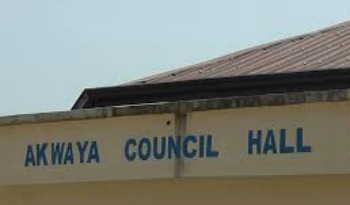All About AKWAYA
Akwaya Subdivision is found in the Manyu Division in the South West Region of the
country. The subdivision has five court areas which include, Boki, Assumbo,
Takamanda, Mbulo and Mesaga-Ekol, and the Akwaya council has 35 Municipal
council. The Akwaya area has a total land surface area of 488 km² and a total population of 120,115 inhabitants with a
population density of 476.64 persons/km².

The subdivision is boredered to the North West by Menchum Division and Momo Division, to the south by Mamfe central subdivision. To the east by Eyumojock subdivision and to the west by Upper Bayang subdivision. The area has about 99 gazetted villages. During the rainy season, the roads become very difficult to access by foot and access to the area is mostly by foot from Mamfe and by vehicles through Nigeria.
Ethnicity
The Akwaya area has so many ethnic groups which include Banta, Becheve, Balo, Tiv, Anyang, Oliti, Evand, Iploh, Temah, Icheve, Ugar, Beba, Ekwot, Avande and Benage. Most of these ethnic groups are from different part of the country especially from the North West Region of the country. Some are in the area as civil servants while others are engaged in agriculture and trading.
Relief
The Akwaya area has a varied topography. The North Western and North areas of Akwaya is made of mountainous terrain, steep slopes and hills, with altitude which ranges from between 1000 m to 1700 m. Areas like Olulo, Kalumo and Akwaya central area consist of plains.
The hill slopes are very steep, narrow boulders strewn crest and deeply incised escarpments and valleys. In most of the terraces, the geomorphic bedrock is largely Precambrian basement complex of igneous and metamorphic rocks which give rise to the poor soils found in some parts in the north of Akwaya.
Hydrology
The Akwaya area comprises of many sreams, rivers and springs. Main rivers in this area include, Tachene River,Eveh River, Cross River, Mamfi River, Ebinsi River, Makumonou River, Mone River and Tafu River just to name a few. Most of these rivers empty in to the cross River and finally to the sea. The Cross River is shared between Akwaya, Mamfe Central subdivision and Eyumojock. Streams and springs in this area is use for drinking while most of the rivers are used for fishing and trade channels into Nigeria.
Climate
The area is made of two distinct seasons which is the dry season and the rainy season. The dry season starts from late November to early June with mean annual temperatures of about 27⁰c while the rainy season in the area starts from April with very high intensity of rainfall experience in the months of July and August, with annual rainfall of about 4500mm per year.
Rivers flood during the rainy season especially in the months of July, August, September and October, and harmattan from December to February especially in the northern than southern part. Due to climatic change, the pattern may not be respected.
Soils and Vegetation
Soils
The soils in this area are fertile and good for agriculture especially when they couple with the level terrain. The soil type which is dominant in this area is the brown sandy with patches of dark soils.
Vegetation
The Akwaya area is made of two major geographical features which are the savannah in the North and the dense forest in the south. Grassland dominate the North and is noted for cattle grazing. The Obudu cattle ranch in Nigeria shares boundary with the Kajinga and Kalumo grazing land in the North-West of the area. There is also a grazing land at Batabi and Amassi area further North-East
There is a high value conservation forest in the south such as the Mone Forest Reserve and the Takamanda National Park. These conservation forest contains endemic wildlife like buffalos, elephants and gorilla. The South East is made of the Kagwene Gorilla sanctuary bordering with Momo Division in the North West Region of the country.
Akwaya - Agriculture
The Akwaya area is blessed with natural resources, especially in the south where there is abundant forest resources. Most part of the Akwaya area is made of very fertile soils which makes it possible for most of the population to be engage in farming. The farming system which dominates this area is subsistent farming.
Due to the inaccessibility of the area, most of the youth move out in to towns and cities in search for greener pastures while the age stay back and continue with their peasant agriculture.
Nigerians are also noted for moving back and forth in search for farm produce such as bush mangoes, groundnuts, honey, rice and cocoa.
Socio-Economic Activities
The area is made of many secondary grammar schools and technical colleges, a river port and health centres. There is also a lone market constructed with money from RUMPI, even though the market is still unused. Agricultural activities is also practiced in the area as well as mining. The rivers in this area acts as a source of fishing activity and also a means of developing fish ponds
Religion
As far as religion is concerned, Christianity is the most dominant, followed by Islam and African Traditional Religion (Animism). The different denominations found in the Akwaya area include Catholic, Presbyterian, Baptist, Full Gospel, Operation Akwaya Mission, Church of Christ, Gateway Baptist and Apostolic church.
Hope you love this page. Click here to leave Akwaya to our home page
Click here to read more about Akwaya
Tell Us More About AKWAYA...
Have A Great Story About This Topic?
Do you have a great story about this? Share it!